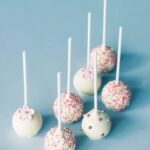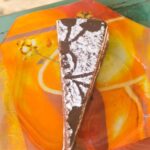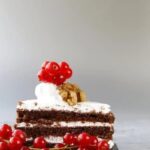Baking and decorating a cake like a pro can elevate your dessert game to a whole new level. Whether you’re baking for special occasions or simply looking to impress your friends and family, mastering the art of cake making is a valuable skill that will never go out of style. In this article, we will guide you on how to bake and decorate a cake like a professional baker, from selecting the essential ingredients to learning different decorating techniques.
To start baking like a pro, it’s crucial to have the right ingredients and equipment on hand. From flour and sugar to baking powder and eggs, each component plays a vital role in achieving the perfect cake texture. Additionally, having the necessary tools such as mixing bowls, measuring cups, and baking pans will ensure that your baking process goes smoothly.
With our step-by-step guide on baking the perfect cake from scratch, you’ll learn how to mix the batter correctly, bake it to perfection, and achieve a moist and fluffy texture every time. We’ll also provide you with tips and tricks to troubleshoot common issues that may arise during the baking process. So gear up your apron and get ready to create delicious cakes that look as good as they taste.
Essential Ingredients and Equipment Needed for Baking a Cake
Baking and decorating a cake like a pro requires not only skill and creativity but also the right ingredients and equipment. To start off on the right foot, it is essential to gather high-quality ingredients such as flour, sugar, eggs, butter, baking powder/soda, salt, and flavorings.
Using fresh ingredients will ensure the best taste and texture for your cake. Additionally, make sure to have any specific ingredients needed for the flavor or type of cake you are creating, such as cocoa powder for a chocolate cake or lemon zest for a citrusy flavor.
In terms of equipment, having the proper tools will make the baking process much smoother. Basic equipment needed for baking a cake includes mixing bowls, measuring cups/spoons, an electric mixer or stand mixer for easier mixing of batter, a whisk, spatula, cake pans in different sizes depending on the desired cake size and shape, parchment paper or non-stick spray for lining pans, and an oven for baking.
Investing in quality equipment will not only make the process more efficient but also help achieve professional results in your cakes.
Whether you are a beginner baker or looking to enhance your skills in cake making and decorating, having the right ingredients and equipment is crucial. By ensuring you have all the essentials before starting your baking journey, you set yourself up for success in creating delicious and beautifully decorated cakes. The next step is following a step-by-step guide on baking the perfect cake from scratch to bring your vision to life with expertise.
Step-by-Step Guide on Baking the Perfect Cake From Scratch
Baking a cake from scratch is a rewarding experience that allows you to customize your creation to your liking. To bake and decorate a cake like a pro, it is essential to start with a solid foundation – the cake itself. Here is a step-by-step guide on baking the perfect cake from scratch:
Gather Your Ingredients and Equipment
Before you start baking, make sure you have all the essential ingredients and equipment ready. This includes flour, sugar, eggs, butter, baking powder, salt, and any additional flavorings or mix-ins you desire. You will also need mixing bowls, measuring cups and spoons, an electric mixer or whisk, and cake pans of the appropriate size.
Preheat Your Oven and Prepare Your Pans
Preheat your oven according to the recipe instructions. Grease and flour your cake pans to prevent sticking. You can also line the bottom of the pans with parchment paper for extra insurance.
Mix Your Batter
In a mixing bowl, cream together butter and sugar until light and fluffy. Add eggs one at a time, beating well after each addition. Sift together dry ingredients like flour, baking powder, and salt before gradually adding them to the wet mixture. Be careful not to overmix the batter as it can lead to a tough cake.
By following these steps diligently, you can bake a delicious homemade cake that rivals those from professional bakeries. Pay attention to details such as ingredient temperatures, mixing techniques, and oven temperatures to ensure success in your baking endeavors.
Tips and Tricks for Achieving a Moist and Fluffy Cake Texture
Achieving a moist and fluffy cake texture is one of the key elements in baking a delicious and professional-looking cake. To start, it is essential to pay close attention to the ingredients used in the recipe. The type and amount of fat, sugar, flour, leavening agents, and liquids will all play a role in determining the final texture of your cake. Using high-quality ingredients and following the recipe accurately are crucial steps in ensuring a successful outcome.
Another important tip for achieving a moist and fluffy cake is to not overmix the batter. Overmixing can lead to gluten development, resulting in a tough and dense cake. It is best to mix the batter until just combined, making sure there are no pockets of flour left unmixed. Additionally, incorporating air into the batter by gently folding in ingredients like whipped egg whites or whipped cream can help create a lighter texture.
Baking the cake at the correct temperature for the right amount of time is also vital in achieving a moist and fluffy texture. Make sure to preheat your oven properly and avoid opening the oven door too frequently while baking.
Testing for doneness with a toothpick or cake tester inserted into the center of the cake will help determine when it is fully baked. Following these tips and tricks will surely elevate your baking skills and allow you to create cakes that rival those made by professional bakers.
Different Frosting and Icing Options for Cake Decoration
Frosting and icing are not just the finishing touches on a cake; they also add flavor, moisture, and sweetness to the overall baking experience. When it comes to cake decoration, the choice of frosting or icing can make a significant impact on the final product. Here are some popular options to consider when you want to bake and decorate a cake like a pro:
Buttercream
Buttercream is perhaps one of the most versatile and commonly used frostings in cake decorating. Made with butter, powdered sugar, and flavorings such as vanilla extract or cocoa powder, buttercream can be easily colored and flavored to suit your preferences. It is perfect for piping intricate designs, creating smooth finishes, or adding texture to your cake.
Cream Cheese Frosting
Cream cheese frosting is known for its tangy flavor and creamy texture, making it an excellent option for carrot cakes, red velvet cakes, or any dessert that benefits from a hint of acidity. Cream cheese frosting is typically made with cream cheese, butter, powdered sugar, and vanilla extract. It is best suited for refrigerated cakes due to its perishable nature.
Fondant
Fondant is a popular choice for professional cake decorators due to its smooth finish and versatility in creating elaborate designs. Made from sugar, water, gelatin or agar-agar, fondant can be rolled out into thin sheets for covering cakes completely or molded into shapes for decorations. While fondant provides a visually stunning result, some find it too sweet to eat on its own.
By experimenting with different frosting and icing options, you can elevate your cake decorating skills and create stunning baked goods that look as good as they taste. Remember that practice makes perfect when it comes to mastering these techniques in order to bake and decorate a cake like a pro.
Techniques for Frosting a Cake Smoothly and Evenly
Frosting a cake smoothly and evenly is crucial in achieving a professional-looking finish. Here are some techniques to help you master this skill:
- Start with a crumb coat: Before applying the final layer of frosting, it is recommended to apply a thin layer called a crumb coat. This helps seal in any loose crumbs on the cake, making it easier to achieve a smooth finish later.
- Use an offset spatula: An offset spatula is the best tool for spreading frosting evenly on the cake. Hold the spatula at an angle and gently glide it over the surface of the cake in smooth strokes.
- Rotate the cake: To ensure even coverage and smooth edges, rotate the cake as you frost it. This will give you better control over the thickness of the frosting and help create a seamless finish.
Achieving perfectly frosted cakes takes practice, so don’t be discouraged if your first attempts are not flawless. With time and patience, you will develop your skills and be able to frost cakes like a pro.
Remember, practice makes perfect. The more you bake and decorate cakes, the better you will become at creating beautiful and delicious treats for yourself and others to enjoy. Keep experimenting with different flavors, textures, and decorations to hone your skills in baking and decorating cakes like a pro.
Now that you have learned some techniques for frosting a cake smoothly and evenly, it’s time to put your knowledge into practice. Get creative with your decorations and don’t be afraid to try new ideas. Baking and decorating cakes can be both fun and rewarding, so enjoy the process and showcase your talent in creating stunning desserts for any occasion.
Creative Decoration Ideas for Cakes, Including Piping Techniques and Fondant Decorations
When it comes to decorating cakes like a pro, having creative and innovative decoration ideas can truly elevate your final product. Piping techniques and fondant decorations are popular choices for adding flair and personality to any cake. Here are some ideas and techniques to help you take your cake decorating skills to the next level:
- One popular piping technique is creating buttercream flowers. With a variety of piping tips such as petal, round, or star tips, you can pipe beautiful floral designs onto your cake. Start by practicing different flower shapes on a piece of parchment paper before transferring them onto your cake.
- Another fun piping technique is creating intricate patterns and designs using royal icing. This versatile icing can be piped into delicate lace patterns, intricate borders, or detailed monograms to adorn your cake.
- For those looking to add a touch of elegance to their cakes, fondant decorations are a great option. Fondant can be rolled out and cut into various shapes and designs to embellish your cake. From geometric patterns to cute figurines, the possibilities with fondant are endless.
In addition to piping techniques and fondant decorations, consider incorporating other creative elements into your cake design such as edible flowers, fresh fruit garnishes, or edible glitter for a touch of sparkle. Experiment with different textures and colors to create visually stunning cakes that will impress everyone at the party.
Remember that practice makes perfect when it comes to mastering these decoration techniques. Don’t be afraid to try new ideas and push yourself out of your comfort zone. With patience and persistence, you’ll be able to bake and decorate a cake like a pro in no time.
Troubleshooting Common Cake Baking and Decorating Issues
Baking and decorating a cake like a pro can be a rewarding experience, but it’s not always smooth sailing. Many home bakers may encounter common issues along the way that can affect the taste, texture, or appearance of their cakes. It’s important to know how to troubleshoot these problems to ensure your final product is as delicious and visually appealing as possible.
One common issue home bakers often face is dry or dense cakes. This can happen for a variety of reasons, such as overmixing the batter, using too much flour, or baking the cake at too high of a temperature. To avoid this problem, make sure to follow the recipe closely, measure ingredients accurately, and avoid overmixing the batter. Additionally, be sure to check your oven temperature with an oven thermometer to ensure it’s accurate for baking.
Another issue that may arise is a cake that sinks in the middle after baking. This can occur if the cake is underbaked, opened and closed on the oven door during baking, or if there’s too much leavening agent in the batter.
To prevent this from happening, make sure to bake your cake for the recommended amount of time and avoid opening the oven door until it’s almost done baking. You can also try tapping the top of the cake gently – if it springs back immediately when lightly touched then its baked through.
By being aware of these common issues and knowing how to troubleshoot them effectively, you’ll be better equipped to bake and decorate a cake like a pro. Remember that practice makes perfect, so don’t get discouraged if your first few attempts aren’t flawless. With time and experience, you’ll soon be creating beautifully baked and decorated cakes that will impress your friends and family alike.
Resources for Further Learning and Inspiration in Cake Decoration and Baking
Baking and decorating a cake like a pro is not only a valuable skill, but it can also be a truly enjoyable and rewarding experience. By mastering the art of cake baking and decoration, you can create stunning masterpieces that will impress your friends and family on special occasions. With the right ingredients, equipment, techniques, and creativity, anyone can learn how to bake and decorate a cake like a pro.
To start on your journey to becoming a cake baking and decorating expert, it is essential to understand the basic ingredients and equipment needed for baking a cake. From flour and sugar to baking powder and eggs, each ingredient plays a crucial role in achieving the perfect cake texture. Additionally, having quality equipment such as mixing bowls, measuring cups, an oven thermometer, and various piping tools will help you in achieving professional results.
Following a step-by-step guide on baking the perfect cake from scratch is fundamental in honing your skills in cake decoration. From preparing the batter to monitoring baking times and testing for doneness, each step requires attention to detail for optimal results. By incorporating tips for achieving a moist and fluffy texture into your baking routine, you can ensure that every cake you bake turns out beautifully.
Experimenting with different frosting options and practicing various icing techniques will enhance your ability to create visually appealing cakes that taste as delightful as they look. With practice and dedication to learning new techniques, you can soon be decorating cakes like a true professional.
Frequently Asked Questions
How Do You Decorate a Cake Like a Professional?
Decorating a cake like a professional involves mastering techniques such as smooth frosting, piping designs, and using fondant to create intricate details. It’s essential to have the right tools, like offset spatulas, piping bags, and various tips for different effects.
What Do Professionals Use to Decorate Cakes?
Professionals often use tools like icing smoother to create a flawlessly smooth surface on cakes. Piping tips in various shapes and sizes are used to pipe intricate designs or borders. Fondant is another popular choice for creating detailed decorations that can be sculpted or molded into different shapes.
How Do You Make a Cake More Professional?
To make a cake more professional, attention to detail is key. This includes ensuring even layers when stacking cakes, straight edges when frosting, and clean decorations that complement the overall design.
Using fresh ingredients and quality flavorings also elevate the taste of the cake to match its appearance. Practice and patience are crucial in honing your skills to achieve a professional finish in cake decorating.

Welcome to my blog about home and family. This blog is a place where I will share my thoughts, ideas, and experiences related to these important topics. I am a stay-at-home mom with two young children. I hope you enjoy reading it! and may find some helpful tips and ideas that will make your home and family life even better!





